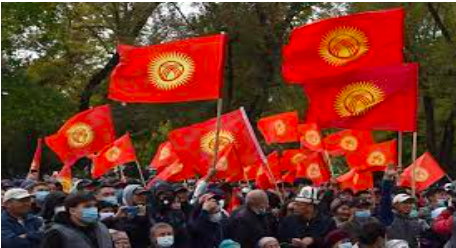Chinese Cinema
Posted on : February 3, 2020Author : AGA Admin

Filmmaking had become nearly moribund in China from the mid-1960s to the mid-1970s during the Cultural Revolution. Under new leadership in the late 1970s, the ruling Chinese Communist Party sought to instigate economic development and open the country to international commerce and communication. Some veteran filmmakers resumed their careers, and one, Xie Jin, made a controversial work, Furong zhen (1986; Hibiscus Town), showing the deleterious effects of communist political dogma on a rural village. The Beijing Film Academy, closed for more than a decade, reopened in 1978 and graduated its first new class in 1982. From this group came several figures who began to make films in the 1980s and who became known collectively as China’s Fifth Generation of film directors (the previous four generations had been associated with specific decades beginning in the 1910s and early ’20s). The Fifth Generation significantly transformed Chinese cinema by moving production away from its traditional studio interiors and backlot standing sets and into distant rural locations, which the filmmakers in many cases had come to know when they were sent from the cities during the Cultural Revolution to be country teachers or farmhands. Chen Kaige’s Huang tudi (1984; Yellow Earth), Da yuebing (1986; The Big Parade), Haizi wang (1987; King of the Children), and Bian zou bian chang (1991; Life on a String) emphasized China’s wide-open spaces and bright landscape colours. Similar impulses, with variations of style and theme, shaped the work of Zhang Yimou (Hong gaoliang [1987; Red Sorghum], Ju Dou [1990], Dahong denglong gaogao gua [1991; Raise the Red Lantern], Qiu Ju da guansi [1992; The Story of Qiu Ju]) and Tian Zhuangzhuang (Lie chang zha sha [1985; On the Hunting Ground], Daoma zei [1986; Horse Thief]). As these filmmakers, and others, gained international recognition, their work became both more commercial and more political and thus more controversial in the eyes of Chinese authorities. The Cultural Revolution became a subject in Chen’s Bawang bieji (1993; Farewell My Concubine), Zhang’s Huozhe (1994; To Live), and Tian’s Lan fenzheng (1993; The Blue Kite), the last of which caused the filmmaker to be banned temporarily from film work. Both Chen and Zhang turned to what may have appeared a less-contentious historical subject, Shanghai in the early 20th century, although possibly with allegorical purpose, in the former’s Fengyue (1996; Temptress Moon, 1996) and the latter’s Yao a yao yao dao waipo qiao (1995; Shanghai Triad). As these filmmakers continued to develop in new directions (and Tian was able to resume film work), younger directors identified as a Sixth Generation, often working independently of the official studios, focused on contemporary urban subjects, depicting the social issues involved in the rapid growth of China’s cities.




